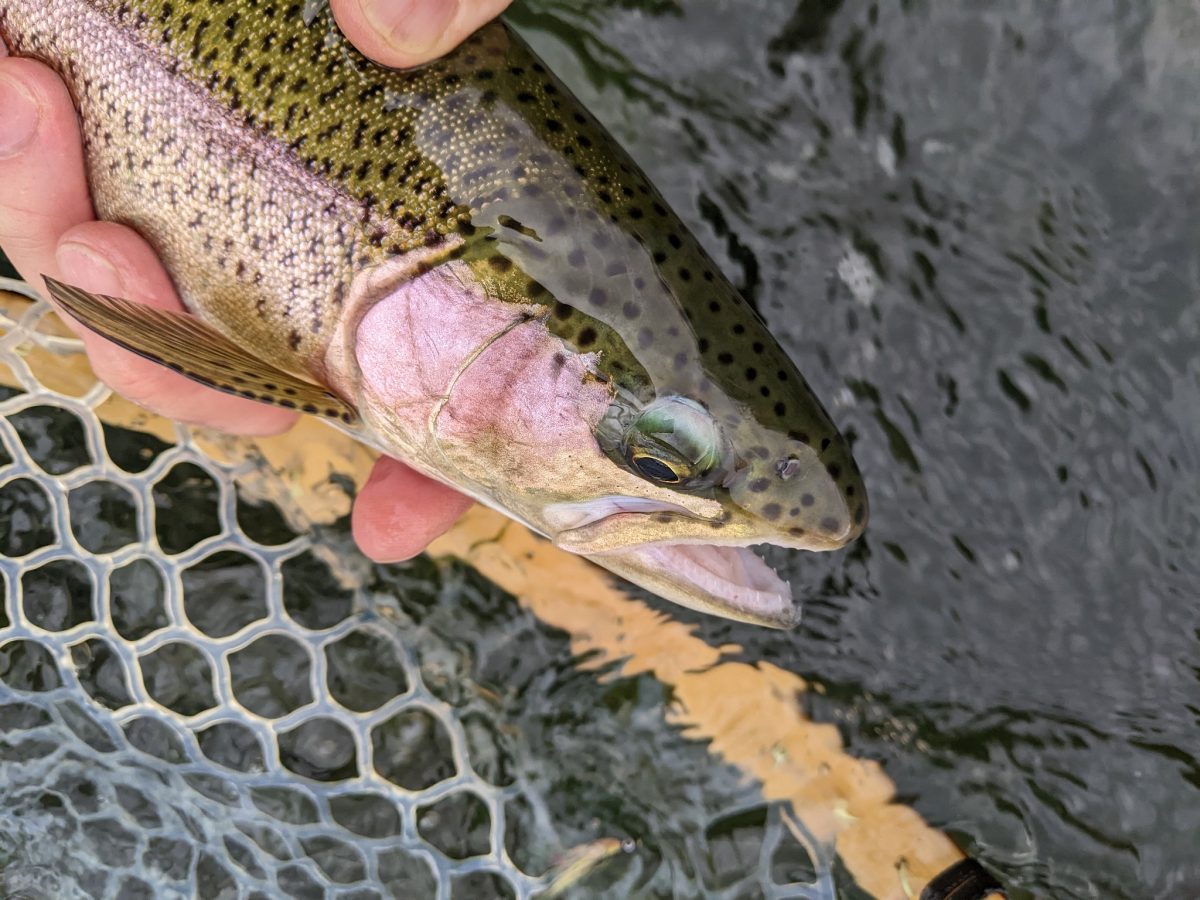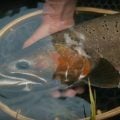Details on the Big Hole River Trout Decline

New research shows Big Hole River brown and rainbow trout numbers are plummeting. – photo by Kent Sanders
The Big Hole River is one of the most-heralded trout fisheries in all of Montana. It’s a 153-mile freestone that flows through incredible scenery. The Big Hole is also facing serious trouble as recent reports have documented a stunning decline in trout populations.
The nearby Ruby and Beaverhead Rivers are facing problems, too, but not as dire as what we’re seeing in the Big Hole.
Brown trout numbers dived in 2022, but the most recent data from the Big Hole shows that rainbow trout numbers are in trouble, as well. Montana Fish, Wildlife, and Parks (FWP) recently documented declines throughout the entire 153-mile stretch, but the Melrose section likely only supports a total population of no more than 500 brown and rainbow trout per mile.
A few obvious questions should be asked here—what’s causing the decline, what can we do to fix it, and why does it matter to the average angler?
Right now, it’s unclear what’s causing the decline. There’s the usual fighting between ranchers and anglers, with the latter accusing the former of using too much water for irrigation. Ranchers conversely point to increased angling pressure, especially during the warmest parts of the year.
But a larger contingent points to climate change as a major factor in the trout decline. Low flows and warm water can cause excess fish mortality, especially if fish are being caught and released when water temperatures exceed 68 Fahrenheit.
Still others point to a parasite—Tetracapsuloides bryosalmonae (T. bryo)—that killed mountain whitefish in the Yellowstone River in 2016. The folks over at Big Horn River Foundation have an excellent, in-depth story on this subject, where they mention this parasite in greater detail, if you’re interested in further reading.
Also of note in that Big Horn River Foundation article is the elevated nutrient pollution within the river, likely coming from fertilizer washing off croplands alongside the river.
It’s not clear what exactly is causing the decline, and possible fixes are even murkier. Currently, there are no plans from Montana officials. Guides and outfitters have submitted a letter to Montana Governor Greg Gianforte asking for action on the problem. You can read that letter in full here.
In a statement to Fly Fisherman Magazine, Governor Gianforte did say he will meet with guides and outfitters as part of his 56 County Tour.
So what does this all mean to anglers? Particularly those of us who don’t live in Montana nor fish the Big Hole regularly?
Problems like this are coming to more and more rivers across the country, and with the cause of the Big Hole trout decline likely being multi-faceted, it’s fair to assume that any substantial solution will require compromise and hard decisions from all river stakeholders. If Montana officials can find a solution to the problem facing the Big Hole, it could set a blueprint for heading off these problems in other areas throughout the West.
Rio Grande Cutthroat Restoration Project Finished
Wealthy Americans Carve Up Prairie











